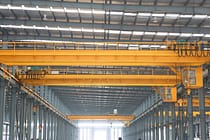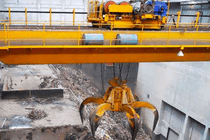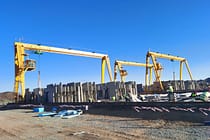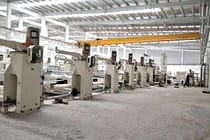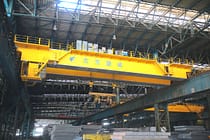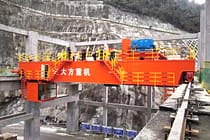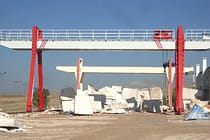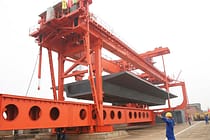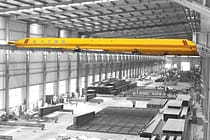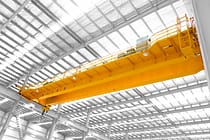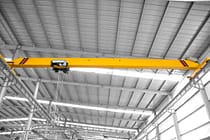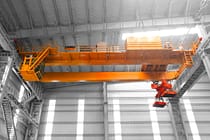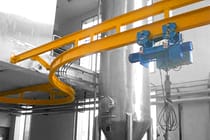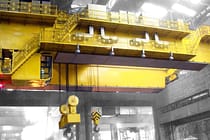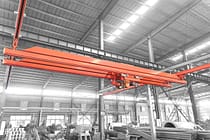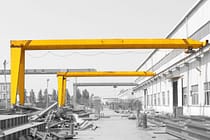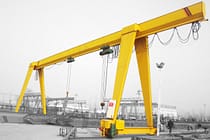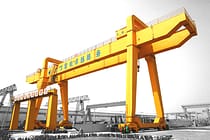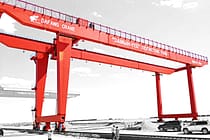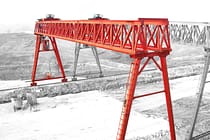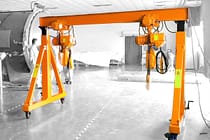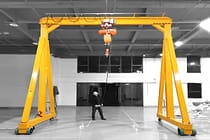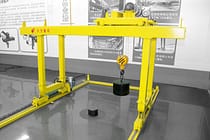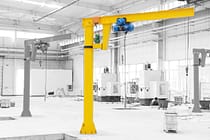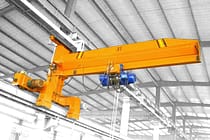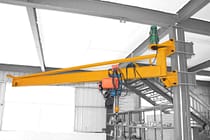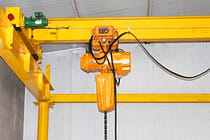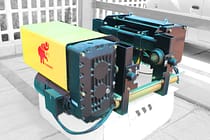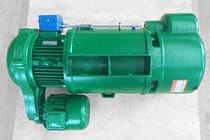How Many Limit Switches Are Required In An Overhead Crane?
If you work in a warehouse or construction site, you are likely familiar with overhead cranes. These machines are used to lift and move heavy materials, making them an essential tool in many industries. Safety is always a top priority when operating machinery, and overhead cranes are no exception. One crucial safety feature of an overhead crane is the limit switch. But how many limit switches are required in an overhead crane? Let’s explore this question in detail.
What Is A Limit Switch?
Before we dive into the number of limit switches required for an overhead crane, let’s first understand what a limit switch is. limit switch is a safety device that prevents the crane from moving beyond certain limits. It works by triggering an electrical circuit to stop the crane’s movement when it reaches the designated limit position. Limit switches are generally installed at the end of the crane’s travel path, both horizontally and vertically.
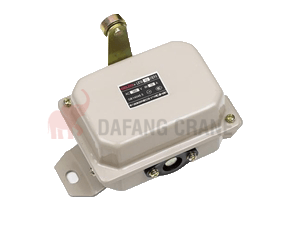
How Many Overhead Crane Limit Switches Do You Need?
The number of limit switches required in an overhead crane depends on the crane’s design, size, and application. All EOT cranes are to have at least two limit switches installed for each motion direction. This means that if your crane moves horizontally and vertically, you will need at least four limit switches installed.
However, some bridge cranes may require more than two limit switches in each direction. For example, if your crane has multiple hoisting mechanisms attached, each machine must have its own set of limit switches. Similarly, if your crane has a trolley that moves along a curved path, additional limit switches may be necessary to ensure safe operation.
Another factor that affects the number of limit switches required is the crane’s intended use. If the crane is used in a hazardous environment, such as a chemical plant or oil rig, additional limit switches may be necessary for increased safety.
How Do You Install Overhead Crane Limit Switch?
Firstly, gather the necessary tools and materials. You need a limit switch, wires, a screwdriver, pliers, and a power source.
Next, identify the location where you want to install the limit switch. It should be near the object that needs to be detected and accessible for maintenance. Ensure that the switch is rated for the voltage and current requirements of your system.
Once you have identified the location, turn off the power supply to the system. It will prevent any accidental shocks or damages during installation. Then use a screwdriver to remove any covers or panels that may be obstructing access to the installation site.
Now it’s time to connect the wires. Strip the ends of the wires and attach them to the appropriate terminals on the switch using pliers. Refer to the provided wiring diagram for proper connections. Ensure that the connections are secure and tight to prevent any loose connections or short circuits.
After wiring the switch, it’s time to mount it. Use screws to attach the switch to the desired location. Ensure that the switch is properly aligned and positioned to detect the object accurately.
Finally, turn on the power supply to the system and test the switch. Check whether the switch is detecting the object accurately and activating the system as expected. If there are issues, recheck the wiring and connections.
Benefits Of Overhead Crane Limit Switch
Precise Control Over The Movement Of The Crane
Limit switches are designed to restrict the travel of the crane to a predetermined distance, ensuring that it moves only where intended. This level of control is particularly crucial when lifting and moving heavy loads, as even a slight deviation from the intended path could lead to collisions and accidents.
Limit switches can be used to set upper and lower limits for crane movement, preventing it from traveling too high or too low. They can also be used to set limits on horizontal travel, ensuring that the crane does not collide with other objects in its path. By limiting the distance traveled by the crane, operators have more control over its movement, allowing for precise positioning of loads.
Safety
By controlling the movement of the crane, limit switches help prevent accidents and ensure that the crane operates within safe parameters.
For instance, if the crane attempts to lift a load that exceeds its weight capacity, a limit switch will prevent it from doing so, Preventing overload from causing damage to the machine and surrounding equipment. Similarly, if the crane approaches a dangerous obstacle, such as a wall or ceiling, the limit switches will automatically stop the machine, avoiding any potential collisions.
Limit switches can also be programmed to perform emergency stops, which immediately halt the crane’s movement in the event of an emergency. This feature adds an additional layer of safety, allowing the operator to quickly respond to any unexpected situations without risking harm to themselves or others.
Extend The Lifespan Of The Crane
Limit switches work by preventing the crane from traveling beyond its intended path, reducing wear and tear on its components. This, in turn, reduces the frequency of maintenance and repairs required, extending the life of the crane.
For example, limit switches can prevent the hoist from hitting the end stops too hard, minimizing the impact on the crane’s gears and brakes. Similarly, limit switches can prevent the trolley from traveling too far along the crane bridge, reducing wear on the wheels and tracks. By reducing stress on the crane’s components, limit switches can help extend the useful life of the crane.
FAQS
- How do limit switches work in an overhead crane?
Limit switches detect when the hook or trolley reaches the end of its travel path and automatically shut off power to the crane motor. - What happens if an overhead crane does not have limit switches?
An overhead crane without limit switches can continue to travel beyond its safe operating range, potentially causing damage or harm to personnel or equipment. - Can additional limit switches be added to an existing EOT crane?
Yes, additional limit switches can be added to an existing crane if necessary for increased safety or compliance with regulations. - How often should limit switches be tested?
Limit switches should be tested regularly as part of a routine maintenance schedule, typically every six months to one year, depending on usage and other factors. - What are some other safety features of overhead cranes?
Other safety features include emergency stop buttons, warning lights, and audible alarms that alert personnel when the crane is in operation.
Send Your Inquiry
- Email: sales@hndfcrane.com
- WhatsApp: +86-191 3738 6654
- Tel: +86-373-581 8299
- Fax: +86-373-215 7000
- Add: Changnao Industrial District, Xinxiang City, Henan Province, China
